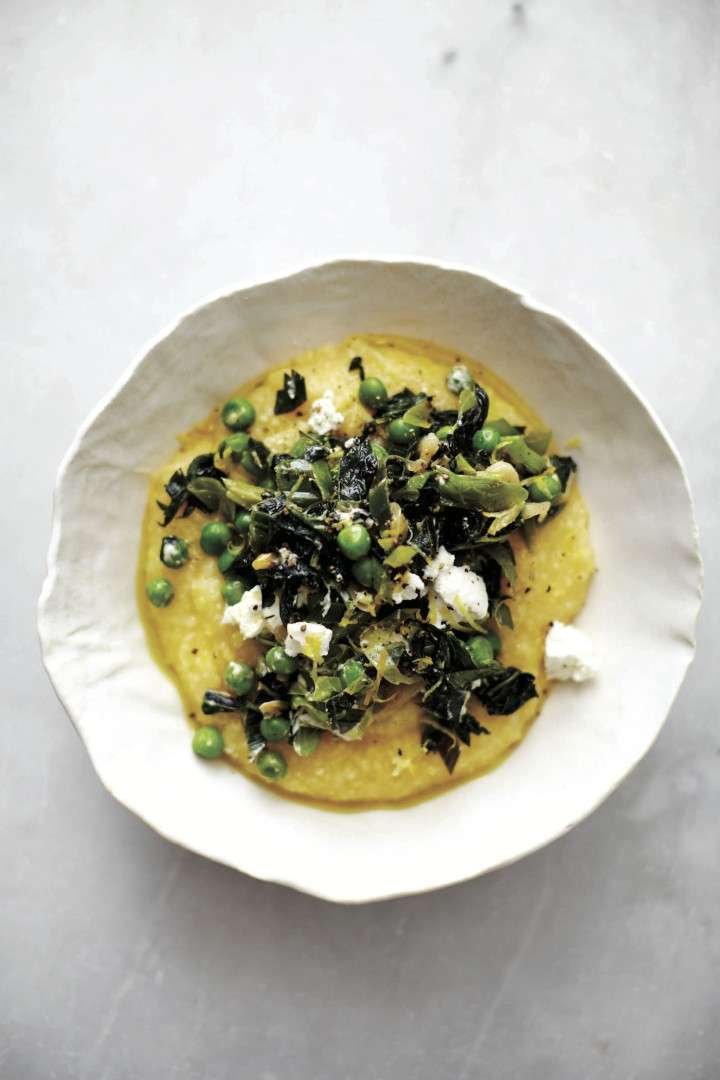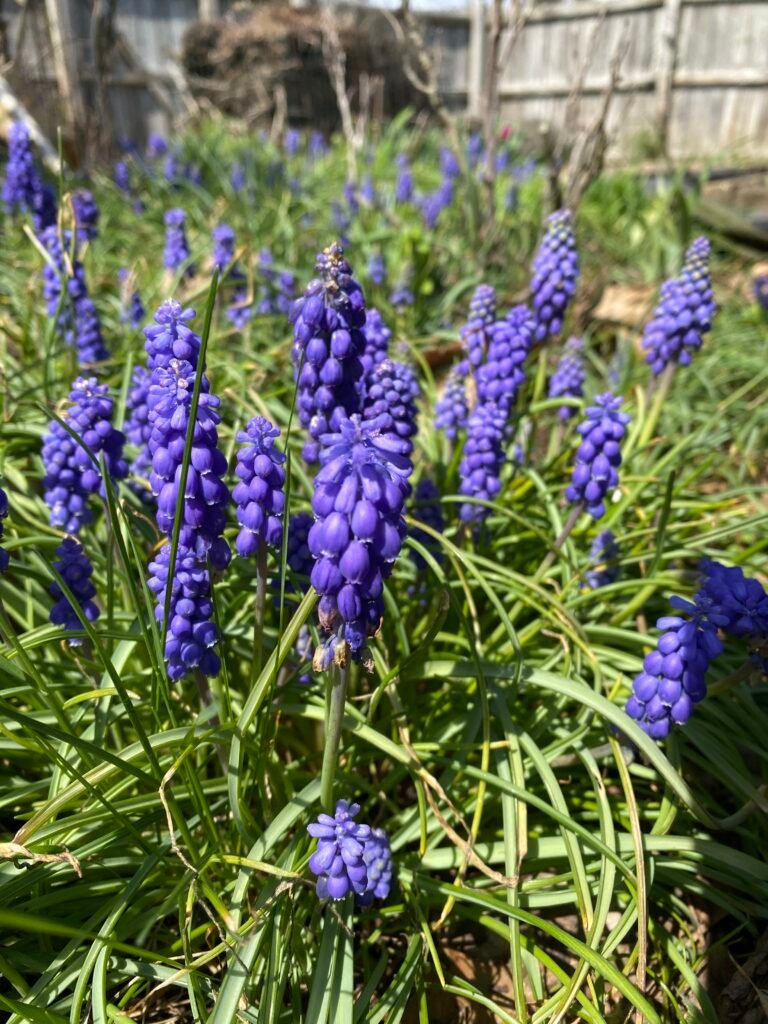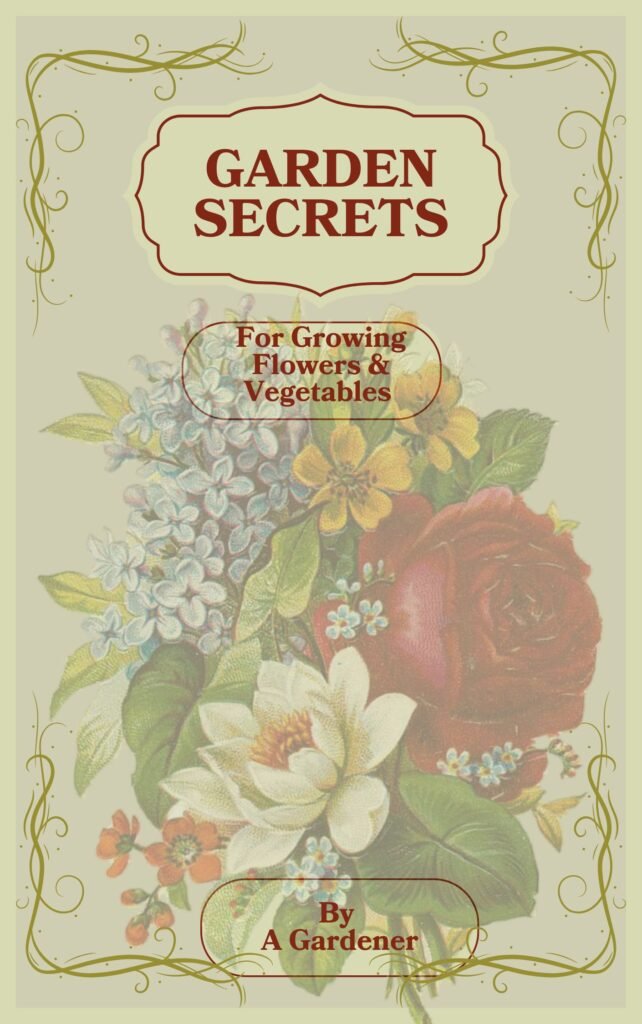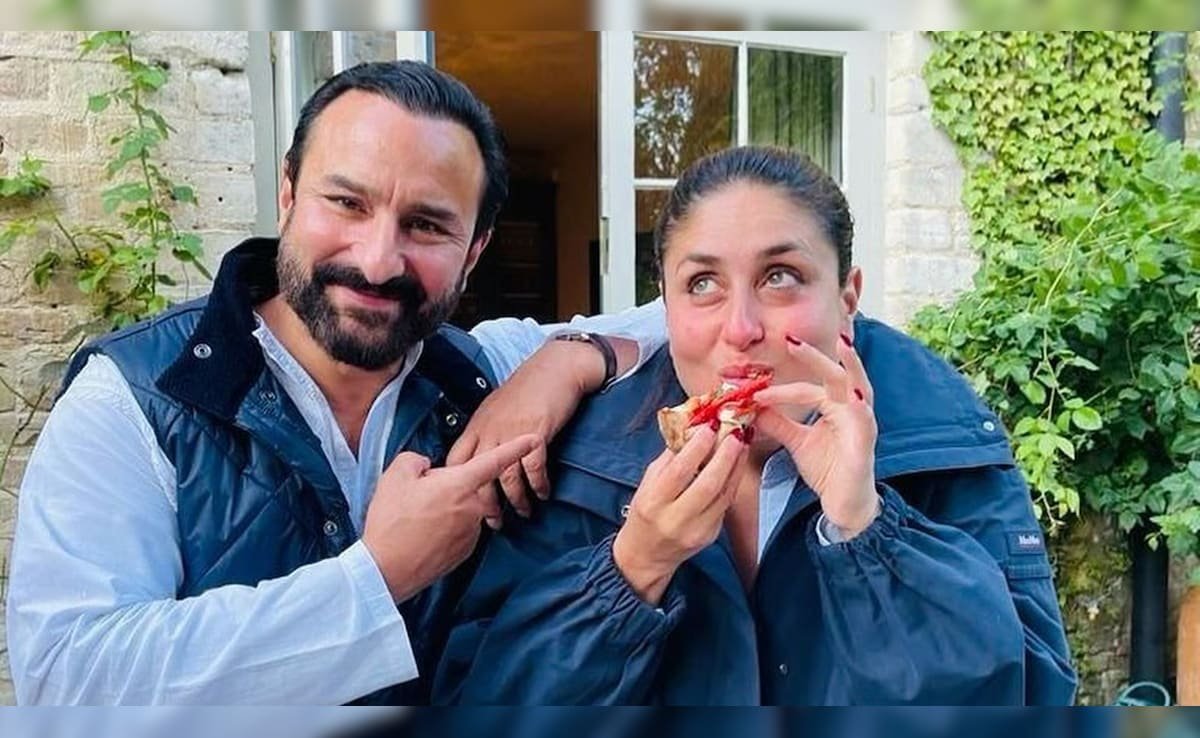 I CAN ALMOST taste it now: the flavors of the first spring crops, whether homegrown, or from your CSA share, or even ethically foraged…with the promise of a whole growing season of the freshest, tastiest produce to come. It’s the perfect time to think about adding some new recipes to our repertory that can really show them off, and who better to ask for inspiration on that score than Amy Chaplin, whose approach to cooking is nature-inspired and whole-foods based.
I CAN ALMOST taste it now: the flavors of the first spring crops, whether homegrown, or from your CSA share, or even ethically foraged…with the promise of a whole growing season of the freshest, tastiest produce to come. It’s the perfect time to think about adding some new recipes to our repertory that can really show them off, and who better to ask for inspiration on that score than Amy Chaplin, whose approach to cooking is nature-inspired and whole-foods based.
It’s the 10th anniversary of Amy’s James Beard award-winning cookbook, “At Home in the Whole Food Kitchen” (affiliate link), and a special updated edition is about to be released to celebrate.
Amy has worked in the food world around the globe for three decades, as a cookbook author, vegetarian chef, teacher and recipe developer. She is a native of Australia who now lives and gardens in the Hudson Valley of New York State, and I asked her help to get us all ready for making the most creative and delicious use of the botanical bounty that’s ahead of us.
Plus: Comment in the box near the bottom of the page to enter to win a copy of the new book.
Read along as you listen to the April 7, 2025 edition of my public-radio show and podcast using the player below. You can subscribe to all future editions on Apple Podcasts (iTunes) or Spotify (and browse my archive of podcasts here).
Amy is one of the presenters at the May 10-11 Workshop Experience Weekend in Columbia County, N.Y. All the details on more than 19 events, including hers, are listed here.
whole-food cooking with amy chaplin
Download file | Play in new window |
Subscribe: Apple Podcasts | Spotify
Margaret Roach: Hi Amy, and happy 10th anniversary to the book. Wow, that went fast, huh?
I was so glad to see that you’re going to be part of the annual Workshop Experience Weekend celebrations in my area—a little bit away from you, but not too far. You’re going to be doing an event in Hillsdale, N.Y., at Hillsdale General Store’s Home Chef shop, on Saturday May 10th. That sounds like it’ll be fun. You’re doing a chat with a friend-
Amy Chaplin: With Tamar Adler, actually, who is an amazing cookbook author and has written one of my favorite books, “An Everlasting Meal.” Yeah, she lives in Hudson, and we’re going to be just chatting, an author chat and a little interview. I’m really excited because it’s an intimate event and it’ll be the first one public event once this anniversary edition is released.
Margaret: Yeah, wonderful. So the book, it has 150 vegetarian and vegan recipes, and it has lots of teaching, too, in its pages. Like all sorts of glossaries of different ingredients—the grains or the sweeteners or the oils or the vinegars—so that the cook or the person who’s about to maybe try one of the recipes will understand the distinctions between the ingredients. And there’s lots of help for putting together ideas, and also for putting together what you call “the well-stocked whole food pantry,” which I think is the foundation of your cooking style as expressed in this book, yes?
Amy: Yes, it is. I mean, besides what is available seasonally through produce and fruits and things that change with every season, it is the foundation of being able to grab a whole grain or a bean or some seaweed and nuts and seeds. You need a good pantry for something to spring off, and sometimes you don’t have many vegetables [laughter]. So when the pantry really comes in handy, like now, when we’re sort of at the end of all the storage root vegetables and we’re kind of looking for something new and bright, often it’s a squeeze of lemon in your lentil soup.
Margaret: Right. A girl’s got to have a lemon [laughter].
Amy: Yeah, something, anything fresh. I’ve been grating carrots lately, which are still local and they’ve stored so well. Not my own carrots, but a grated carrot salad with a little bit of mint can really make all the difference these days.
Margaret: Yeah, absolutely. And so as I said, you live in the Hudson Valley now, as do I, and I understand you have a garden as well. And I wondered if there are, besides the pantry indoors, the grains and the beans and the other things that we were just talking about a little bit, are there particular ingredients, so to speak, that you want to have nearby, fresh from the garden, that you always grow or-?
 Amy: Yeah, I mean, even though I grew up with a really extensive garden—my parents are really both fantastic gardeners—I lived in cities for decades. And now living upstate, I mean, I’ve just got a small property, so I’ve got only a couple of raised beds, so I use a lot of pots, which can be great for sunny spots for your tomatoes, because in this part of the world, you’ve really got to get them going early and they’ve got to get as much sun as possible if you want to eat them, I’ve found, unless they’re cherry tomatoes, which happen a little bit faster.
Amy: Yeah, I mean, even though I grew up with a really extensive garden—my parents are really both fantastic gardeners—I lived in cities for decades. And now living upstate, I mean, I’ve just got a small property, so I’ve got only a couple of raised beds, so I use a lot of pots, which can be great for sunny spots for your tomatoes, because in this part of the world, you’ve really got to get them going early and they’ve got to get as much sun as possible if you want to eat them, I’ve found, unless they’re cherry tomatoes, which happen a little bit faster.
But I always have pots of herbs when you’re cooking with small children and you can’t leave them for more than a second unattended [laughter], it’s hard to get out to around the corner of the house to get the vegetables out of the garden. And I’m often like, “Oh my God, this kale needs to be eaten.” So we just sort of pluck things and eat them raw. It’s not really that I’m planning some great meals out of the vegetables. It’s just planting vegetables with children is the best way to get them to eat them.
So right outside my kitchen door are pots, and I always have cilantro, parsley, chives, basil, rosemary, thyme, sage—all of the herbs. Because that is just such a great way to add adult flavor to really simple meals that kids love, like a whole bunch of herbs. And I actually find son will eat herbs that just like a few stalks of parsley, and I’m really happy with that because you’ve got to get greens somehow.
Margaret: The other thing I love the idea of having… So you’re having these pots sort of right nearby, literally at hand [laughter] because you can’t take your eyes off of the kids for too long. But I love that idea, and also because I’ve been thinking of moving some parts of vegetable garden closer to the kitchen door or the back porch door or whatever, as you say in pots in portable form.
Sometimes there’s certain ingredients that I love like when I make vegetable soup. There’s one particular bean that I really like because it’s a bean that the beans swell up in the pod, but the pod or green part doesn’t get nasty when the beans are swollen up inside. They’ve developed inside, so you’re getting your green and your beans in this one creature [laughter].
Amy: Which bean is that?
Margaret: It’s called ‘Aunt Ada’s Italian,’ from Turtle Tree Seed, and it’s just wonderful. In the Southeastern United States or the Southern United States, I think they have what they call greasy beans, where you can cook them with the pod and the beans together, so to speak, a similar type of thing. But ‘Aunt Ada’s Italian’ is one, and what it does is it, again, it lends those two flavors to the soup. And also the beans being in there, in the same way you might add a chickpea to a vegetable soup or a white bean or whatever, it kind of almost enriches the broth a little bit.
Amy: Yeah.
Margaret: So there’s certain things like that that I can’t get at the CSA or the store or the farm market even—I’ve got to grow it, so that’s why I was curious. And I think the herbs, there’s nothing like fresh ones, right?
Amy: No, and you really can’t go wrong. I feel like they grow so well. I mean, I’ve got a little sunny spot. I kind of drag them further as the season changes [laughter], just so the basil can keep going. Even though I’ve got a ton of basil from my CSA, you still need the bit of purple just for a garnish or maybe Thai basil if you’re making something like a delicious curry or something. So it’s really nice to have all the kinds, even if you are harvesting a lot or getting it from a CSA.
Margaret: Right. So I infer from some of the recipes in the book that you also somewhat close at hand. You may have some patches of good forging material around you. You have a couple of things, maybe either in the garden like stinging nettles or-
Amy: Yeah, the thing is in spring living up here, it’s just a whole another world, I think because it’s such a long winter. And even in New York City, too, I just was dying for the ramps to arrive at the farmer’s market. And just that onion-y, fresh, bright flavor is just so welcome and incredible the first time you have it after winter. And I do have a little patch of ramps down by the stream near us, and we’re very careful to just pluck off without taking the root out and just take a few. And honestly, you only need two with your scrambled eggs and you’ve got-
Margaret: The leaves, right?
Amy: Yeah, yeah. You’ve just got this whole other meal. It just tastes so different. And there is a recipe in the book that does use nettles and ramps if you have them, but of course, you can use leeks instead and nettles. Look, even though I love cooking with them, I just adore the tea. And I am a green tea drinker most of the time. But in the afternoons, the nettle tea is sort of as satisfying to me because it has that quality that makes the water slightly, ever so slightly, viscous. Yeah, it’s not thick at all, but it sounds crazy to say that, but it’s like-
Margaret: No, I understand. Almost there’s a mucilaginous quality to it that it has.
Amy: And it’s so nutritious, especially for vegetarians. I’ve been vegetarian my whole life, and iron is often something that I’ve just be careful with, making sure I have enough of. And nettles are incredibly high in iron, so I actually drink it year-round and get some local dried nettle. But in spring and all the way, really all the way through summer, and then there’s a second go in fall, there’s a lot of roadways around that have nettle everywhere.
I mean, I am careful about it being near farms that use pesticides, but friends have great patches, and I’m always just getting the stalks and without even worrying about using gloves or anything, because they do sting, I just sort of stick the whole branch, like a couple of branches in a Mason jar or a big teapot and pour boiling water over it, and then just sip on that all day. And if you leave it overnight, it turns black. I mean, that’s how much iron is in it. [Laughter.]
Margaret: I’ve never had nettle tea.
Amy: Interesting. Oh my God, it is so delicious. I know. It’s got that really verdant taste, but no caffeine and just, it’s so nutritious and it’s so good for your kidneys and hair growth. And the list goes on and on and on, if you want to go into it. But of course, they’re delicious in a stir fry. And there’s one recipe that does have it, and just is spring to me, which is this soft polenta with nettles peas and a little bit of crumbled fresh local goat cheese, and it’s such a great way to welcome spring.
Margaret: I have to say that when I saw that picture in the book [photo, top of page], I was like, “Oh, can I have that right now, please?”
Amy: Yeah. Well, the peas right now usually have to be frozen.
Margaret: I know, at this time. But I love polenta, and so that just is a beautiful, it’s beautiful, and it had some unexpected flavors. I read the ingredient list, and some recipes aren’t hinted at by the name of the recipe. It’s soft polenta with nettles peas and goat cheese, which sounds good enough. But then you use a bay leaf in the making of the polenta, and then you have, speaking of lemon, you have lemon zest and lemon juice in the green mixture. So there’s like, “Whoa.” I was thinking there’s a lot going on here. It sounds very bright, like the word you used before.
Amy: Yeah. And I use bay leaves often when you’re not using, A lot of people are used to having a chicken stock for polenta or a lot of cheese and butter. And when I wrote this book more than 10 years ago, it took years to write it, but I was coming out of being executive chef of a vegan restaurant in New York, and so we used to make a lot of polenta, and using bay leaves and stocks and things was a great way to get flavor in where you might use something like umami Parmesan or something. Now, I use plenty of dairy because my kids love it [laughter], and I grew up eating dairy. It’s not unusual for me, but there are a lot of recipes in there, over 90 recipes that are actually purely plant-based vegan. A lot of vegans do love this book for that reason.
Margaret: I should say I’ve been a vegetarian for probably about 48 years, something like that. So a long time, too. So the soft polenta, that’s a really beautiful one, and with the nettles and so forth, just sounded wonderful. My former boss, Martha Stewart, she used to look forward each spring to making a stinging nettles soup. They were weeds, right?, but they made a beautiful green soup. There’s lots of things that they can work in, I think.
Amy: Yeah, you need kind of like a creamy base.
Margaret: Like potato maybe or-
Amy: Potato or a white bean is nice if you want to blend. Yeah. Either one. But they’re delicious cooked. I used to do a lot of cooking. I had these clients once that I cooked for that were Russian, and they loved nettles. And so I was always making a pesto with the little tiny, delicate tips, and a lot of work that I don’t have time for right now [laughter], but you can do it.
Margaret: Oh, those small people, they’re keeping you very busy [laughter]. So just for a minute, back to the ramps, you said you’re careful. Would you just take a couple of leaves and not disturb the patch and so forth? Because they are being over-harvested, over-foraged a lot, especially in our area.
And a great thing is that you can grow them. And some of the native plant nurseries, like Prairie Nursery and Prairie Moon Nursery, they sell bare-root plants, little plants, and if you have a shady area, you can get a patch of ramps going. And I know other people who are doing that, and they’re so delighted to have them right there, their own stock plants, the way you have rhubarb in your garden or asparagus in your garden. It’s just such a delight to have.
Amy: And they’re so strong that a little bit goes a long way.
Margaret: Totally.
Amy: When someone gives me some, I actually dehydrated some last year because I was like, I’m not going to cook all these. They’re so moist that they get kind of funky in your fridge pretty quickly. So I dehydrated them. I’ve still got them. I’ve got to grind it up and add salt or do something with them, but they’re nice sprinkled on popcorn or something, then that sort of onion-y flavor.
Margaret: Huh. So as far as things you grow, you were saying earlier that you were grating some carrots, I think from the CSA, not from your fall crop of carrots.
Amy: No. Yeah.
Margaret: I wonder if some of those could go into… There’s one dish in the book that’s just very simple, but the flavor in my mind’s eye or my mind’s tongue [laughter], that it evoked: the carrot and parsley salad. I’d never really thought to just do that. Tell us about that. Because it’s deceptively simple, but a powerful flavor.
 Amy: There’s something about grated carrots, I mean, or any vegetable actually that you grate, because sometimes I do it with beets and I think, “Oh my God, why don’t I do this more often?” So I’m often boiling them and then marinating them. But a fresh-grated vegetable is, yeah, it’s a whole different thing. So carrots and beets are my go-tos for that.
Amy: There’s something about grated carrots, I mean, or any vegetable actually that you grate, because sometimes I do it with beets and I think, “Oh my God, why don’t I do this more often?” So I’m often boiling them and then marinating them. But a fresh-grated vegetable is, yeah, it’s a whole different thing. So carrots and beets are my go-tos for that.
And then of course, you can use apple cider vinegar or lemon, whatever you have, and a good olive oil and salt. And actually, you don’t even need any herbs if you don’t have any. But the other day I did chop up some parsley and mint, and then I toasted some sunflower seeds, and I was like, “Oh my God.” It was just like this whole new thing to eat. It’s delicious to sort of perk up a grain or a bean bowl if you’re someone that just loves fresh-cooked chickpeas, and then you need toppings on it.
And if you don’t just want feta or avocado, you could add grated carrots. I mean, I eat a lot of krauts, which I have a recipe for in the book. And I love to buy locally made krauts, just like red cabbage or carrot-ginger or the curried one or something. It just adds so much flavor to simple meals, but I don’t always have them, and we run out or whatever. And grating a carrot brings that—obviously it doesn’t have all the probiotics as a kraut does—but it brings that sort of freshness into your really simple meals. And often my meals are based around brown rice or quinoa or just a simple cooked grain. So I’m always adding to it. [Above grated carrot salad, marinated beets and more from Amy.]
Margaret: I think the carrot, it doesn’t get the sort of praise it deserves, because I mean, even in the dead of winter, I know there’s been a lot of nights where I’ve thought, what’s for dinner? And sometimes if I have some, especially at some of the larger carrots in the fridge, in storage, so to speak, just slicing them down, lengthwise down the middle and roasting them, and just a roasted carrot is unbelievably delicious [laughter]. Oh, do you know what I mean? And it’s no work, right?
Amy: No. And look, I do the same with steaming. I just sort of even simmering them with a little bit of water and a pinch of salt, and I’m just like, “Oh my God, it’s so sweet.” It’s like that roast thing. It concentrates the flavor.
Margaret: And beautiful. The color is beautiful. And beets, similarly, beets, there’s an intensity, and they’re so gorgeous as well.
Amy: I mean, I know they’re just so… They’re everyday vegetables, but they can be so good. And that’s sort of what I turn to in a hurry. Definitely.
Margaret: Yeah. And so with the beets, for instance—and you were kind of talking about having elements to put together and turn into a meal with the grain base and so forth—you have a simple marinated beet recipe in the book. But having that in the refrigerator, you say having some of those in the refrigerator to add to other dishes can really be a great addition.
Amy: Yeah, any time of day, like marinated beets on a sandwich, I mean, it’s one of my favorite things. Maybe it’s tofu or feta or avocado and mayonnaise on a good rye bread. I mean, that’s just absolutely divine.
Margaret: It adds such an unexpected element of flavor. They’re indescribable to me. They’re earthy, but they’re sweet, and their texture is different, too.
Amy: Yeah. And my youngest son happily gobbles up a whole boiled beet. I’m like, “Whoa. O.K. That’s great.”
Margaret: Whoa. O.K. And with the marinated beets, I mean, it’s very simple, but you actually have more than one vinegar in the dressing.
Amy: Do I?
Margaret: I think you have some balsamic in it.
Amy: Oh, a little bit sometimes. Yeah. I mean, my go-to now is just apple cider vinegar, olive oil and salt. Without measuring, just tossing so that they’ve got something on them, and then I store them in the fridge. But yes, I might have put a little bit of balsamic.
Margaret: Yeah, I think you did in the book, but that just interested me as like, “Oh, I don’t think I’ve done that,” where I’ve mixed up my vinegars and seen what that yielded.
Amy: Yeah. Sometimes I like using a little white balsamic vinegar. If you find sometimes these older beets, they’ve been hanging around a long time. They can sort of lack a bit of sweetness sometimes. I mean, other times, no, not when you roast them usually, but I might add a splash of white balsamic vinegar sometimes that really sort of picks up the sweetness without having to add anything else.
Margaret: From that pantry of yours [laughter].
Amy: The pantry is the key. Yeah.
 Margaret: On the other end of the beet spectrum:That was a very simple thing, to marinate some beets and have a dish of them in the fridge to add to other things. You really elevate them to this status of elegance. You have this recipe that the picture’s just stunning: beet tartlets [above] with poppy seed crust and white bean fennel filling.
Margaret: On the other end of the beet spectrum:That was a very simple thing, to marinate some beets and have a dish of them in the fridge to add to other things. You really elevate them to this status of elegance. You have this recipe that the picture’s just stunning: beet tartlets [above] with poppy seed crust and white bean fennel filling.
Amy: Oh, yum. I know. I love that.
Margaret: It’s so beautiful.
Amy: These tartlets. Yeah, they’re gorgeous. They’re a bit of work with the steps, but also very doable if you plan ahead, because you can make that white bean filling, which is delicious on its own, and have that in the fridge. You can boil the beets and marinate them, slice them, they’re done. And then you’ve got to make the crust. So it can be done in phases, and is an absolutely stunning thing. Just serve anybody, especially with all the different colored beets. I mean, it’s gorgeous. Yeah, really. And it’s all vegan. It’s unusual. I think often tarts have eggs in them, so it’s great for people that have egg allergies, which happen to be a lot lately. I dunno why, but I get a lot of questions about replacing eggs.
Margaret: Oh, interesting. And they’re just so beautiful sliced. I mean, when you look at the concentric rings within a beet or whatever, you know what I mean? They’re just beautiful to look at. So you’ve topped these tartlets with these sliced beets, arranged artfully, and it’s just beautiful as well.
As I said in the introduction, you kind of take us through ideas for all the flavors and ingredients to come all season long. It’s not just about one season. You have gazpacho in the heat of summer and during prime tomato-picking time, and roasted winter vegetables in various incarnations. And there’s even a fruitcake. There’s sweets in the back. There’s a dessert sort of chapter. There’s even a fruitcake from dried fruits. I love that type of fruitcake. So that just delighted me, from dried figs and dates and dried apricots and raisins and spices and so forth. So it’s truly through the year. You have something for all times of year, I think, in the book.
 Amy: Yeah, that’s right. We didn’t divide it seasonally. We just did each chapter with a subtle seasonal progression. So it did start in spring. So it’s like you’ll see the nettles first and then right up to the more wintry whole meals. And then there’s also drinks and there’s sort of nibbles and snacks, things like that. But yeah, and same with the desserts. There’s a whole section on fall and winter tarts that you can make, and spring and summer tarts that you can make. And my idea was that you could kind of mix and match those crusts and fillings, depending on what you had in your pantry, and also if you’re gluten-free or not. Yeah. So there’s a big, well, I was a pastry chef, so there’s a lot of desserts at the back if you delve in. There’s a lot of lessons about using agar and kuzu and arrowroot and those kinds of things.
Amy: Yeah, that’s right. We didn’t divide it seasonally. We just did each chapter with a subtle seasonal progression. So it did start in spring. So it’s like you’ll see the nettles first and then right up to the more wintry whole meals. And then there’s also drinks and there’s sort of nibbles and snacks, things like that. But yeah, and same with the desserts. There’s a whole section on fall and winter tarts that you can make, and spring and summer tarts that you can make. And my idea was that you could kind of mix and match those crusts and fillings, depending on what you had in your pantry, and also if you’re gluten-free or not. Yeah. So there’s a big, well, I was a pastry chef, so there’s a lot of desserts at the back if you delve in. There’s a lot of lessons about using agar and kuzu and arrowroot and those kinds of things.
Margaret: Well, yeah, as I said at the beginning, I loved that, because there’s this teaching, because some of these ingredients are unfamiliar to some of us. And so it was great to have that, not just them listed in a recipe, but explained before I got that far.
Amy: And working as a teacher, I just loved giving people the keys to, once you’ve learned how this acts, you could actually make up your own recipe if you’ve got a whole lot of strawberries or a whole lot of blueberries or whatever you are using. That was the goal.
Margaret: Well, I’m so glad to connect and to talk today. And again, congratulations on the 10th anniversary edition of your award-winning cookbook “At Home in the Whole Food Kitchen.” And also I’ll give details of your May 10th event in Hillsdale, N.Y., in the Hudson Valley that you’re doing to celebrate the book. And thank you. It’s great to speak to you, Amy.
Amy: You too, Margaret.
more from amy chaplin
enter to win a copy of ‘at home in the whole food kitchen’
I’LL SEND A SIGNED COPY of Amy Chaplin’s “At Home in the Whole Food Kitchen” to one lucky reader. All you have to do to enter is answer this question in the comments box below:
What’s one ingredient you always grow or forage, whether an herb or vegetable?
No answer, or feeling shy? Just say something like “count me in” and I will, but a reply is even better. I’ll pick a random winner after entries close at midnight Tuesday, April 15, 2025. Good luck to all.
(Disclosure: As an Amazon Associate I earn from qualifying purchases.)
prefer the podcast version of the show?
 MY WEEKLY public-radio show, rated a “top-5 garden podcast” by “The Guardian” newspaper in the UK, began its 15th year in March 2024. It’s produced at Robin Hood Radio, the smallest NPR station in the nation. Listen locally in the Hudson Valley (NY)-Berkshires (MA)-Litchfield Hills (CT) Mondays at 8:30 AM Eastern, rerun at 8:30 Saturdays. Or play the April 7, 2025 show using the player near the top of this transcript. You can subscribe to all future editions on iTunes/Apple Podcasts or Spotify (and browse my archive of podcasts here).
MY WEEKLY public-radio show, rated a “top-5 garden podcast” by “The Guardian” newspaper in the UK, began its 15th year in March 2024. It’s produced at Robin Hood Radio, the smallest NPR station in the nation. Listen locally in the Hudson Valley (NY)-Berkshires (MA)-Litchfield Hills (CT) Mondays at 8:30 AM Eastern, rerun at 8:30 Saturdays. Or play the April 7, 2025 show using the player near the top of this transcript. You can subscribe to all future editions on iTunes/Apple Podcasts or Spotify (and browse my archive of podcasts here).














Leave a Reply